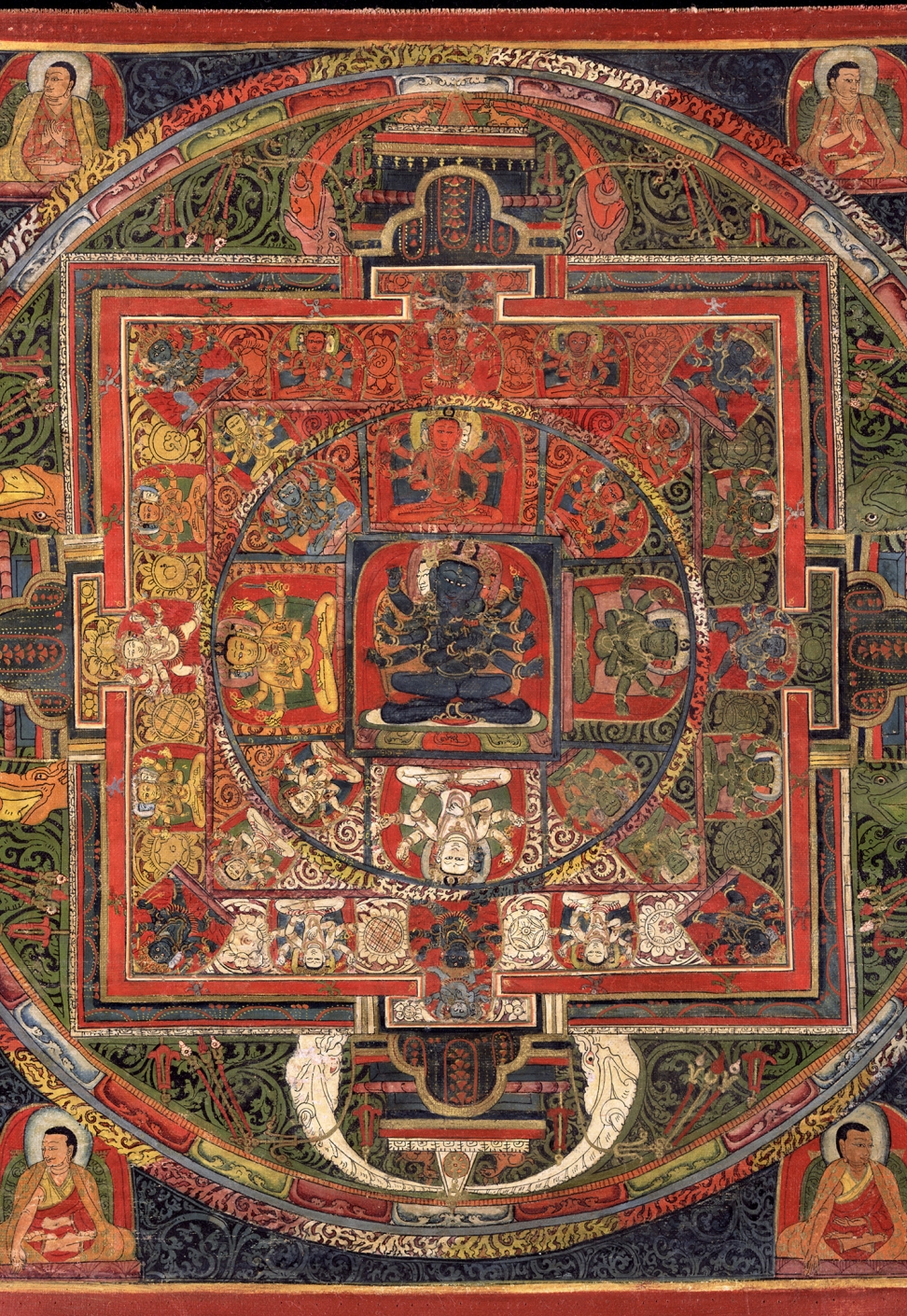
Mandalas play an important part in Buddhist practices, symbolizing the cosmos as the divine palace of a deity who commands his or her retinue. Whether created in paint or in sand, mandalas can take the form of two-dimensional images that depict the divine abode as a geometric diagram, or three-dimensional architectural structures and ritual items in offerings.
Practitioners use mandalas to help visualize the awakened beings who dwell there, in order to evoke their power and gain similar dominion over their own minds. This mandala is focused on the meditational deity Guhyasamaja, who is a form of the Buddha Akshobhyavajra, the Unshakable Vajra. He and the deities who surround him are the so-called directional buddhas, with Vairochana in the East, Ratnasambhava in the South, Amitabha in the West, and Amoghasiddhi in the North. They represent the enlightened qualities and wisdom of the five constituents (skandhas) of the human body and mind, which practitioner develops through the practices of visualization, meditation, and ritual.
H 14 1/8 x W 13 7/8 in.
F1997.43.1, HAR575
- https://dev.rubinmuseum.org/images/content/2812/sfw_f1997.43.1har575__zoom.jpg
- https://dev.rubinmuseum.org/images/content/2812/sfw_f1997.43.1har575__zoom.jpg

